Click on images to enlarge
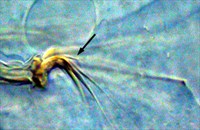
Fig. 1. Tetranychus desertorum adult female - detail of empodium II (arrow indicates short dorsal spur).
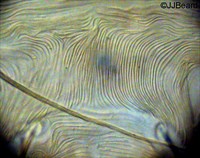
Fig. 2. Tetranychus desertorum adult female - detail of pregenital striae.
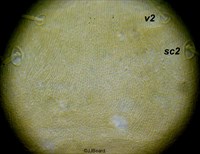
Fig. 3. Tetranychus desertorum adult female - detail of prodorsal striae.
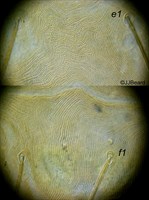
Fig. 4. Tetranychus desertorum adult female - detail of pattern of dorsal striae between setae e1 and f1.
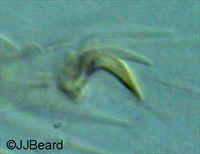
Fig. 5. Tetranychus desertorum adult male - detail of empodium I with obvious dorsal spur.
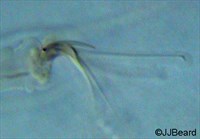
Fig. 6. Tetranychus desertorum adult male - detail of empodium IV with obvious dorsal spur.
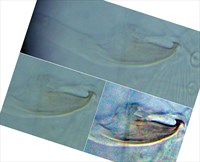
Fig. 7. Tetranychus desertorum adult male - detail of aedeagus (same individual, different focal points).
Material examined
non-types
Taxonomy
Subfamily Tetranychinae
Tribe Tetranychini
Common Name
-
Desert spider mite
-
Prickly pear spider mite
-
Prickly pear red spider mite
Distribution
^^NOT PRESENT IN AUSTRALIA
Argentina, Bolivia, Brazil, Chile, China, Colombia, Costa Rica, Haiti, Hawaii, Japan, Mexico, Nicaragua, Okinawa Island, Paraguay, Peru, Puerto Rico, *USA, Venezuela
Tetranychus desertorum was first recorded in Australia in 1920's (+Dodd 1940) and subsequently by +Davis (1968a); however, it seems likely that this species does not occur in Australia. An examination of several specimens has revealed them to be T. ludeni (see Notes for T. ludeni).
Taxonomy Changes
Tetranychus desertorum Banks 1900
Tetranychus puntiae Banks 1908, synonymy Baker & Pritchard 1953
Tetranychus thermophilus Ewing 1926, synonymy Baker & Pritchard 1953
Septanychus argentinus McGregor 1943, synonymy Baker & Pritchard 1953
Septanychus deserticola McGregor 1950, synonymy Baker & Pritchard 1953
Septanychus texazona McGregor 1950, synonymy Baker & Pritchard 1953
Diagnosis
Female
- empodia I-IV with dorsomedial spur small (2 long) (Fig. 1)
- tarsus I with sockets of zero tactile setae proximal, but with four tactile setae overlapping the socket of the proximal duplex seta
- note that sometimes the sockets of one or two setae are just proximal to the socket of the proximal duplex seta
- pregenital striae longitudinal, entire (Fig. 2)
- prodorsal striae longitudinal, forming U-shape posteriorly, with large lobes (Fig. 3)
- peritreme hook = 30 long
- dorsal striae between dorsal setae e1-e1 and f1-f1 forming diamond pattern = striae e1-e1 longitudinal, striae e1-f1 transverse, striae f1-f1 longitudinal (Fig. 4)
- dorsal striae with lobes (Figs 3, 4)
- ventral striae without lobes
- red in colour
Male
- empodia I-IV with obvious dorsal spur (3-4 long) (Figs 5, 6)
- empodium I with proximoventral hairs fused into ventral claw (Fig. 5)
- empodia II-IV as in female with proximoventral hairs (Fig. 6)
- aedeagus directed dorsally with obvious knob; anterior projection small narrow triangle; posterior projection ventrally curving triangle, tapered to sharp point, appearing hook-like; dorsal margin of knob flat (although can be interpreted as convex); dorsal margin of shaft parallel with ventral margin basally, then gently bending ventrally before abruptly bending dorsally at right angle to form dorsal projection (neck and knob) (Fig. 7)
- yellow-orange
Hosts
many recorded hosts including: Allium spp. (Alliaceae), Amaranthus spp. (Amaranthaceae), Ambrosia spp. (Asteraceae), Araucaria sp. (Araucariaceae), Baileya spp. (Asteraceae), Brassica spp. (Brassicaceae), Carica papaya (Caricaceae), Cichorium intybus (Asteraceae), Citrullus spp., Cucumis spp., Cucurbita spp. (Cucurbitaceae), Dahlia spp., Encelia spp. (Asteraceae), Eriogonum spp. (Poaceae), Fragaria spp. (Rosaceae), Gossypium spp. (Malvaceae), Haplopappus spp. (Asteraceae), Ipomoea spp. (Convolvulaceae), *Larrea tridentata (Zygophyllaceae), Lantana spp. (Verbenaceae), Luffa cylindrica (Cucurbitaceae), Malus domestica (Rosaceae), Mangifera indica (Anacardiaceae), Musa spp. (Musaceae), Opuntia spp. (Cactaceae), *Phacelia crenulata (Boraginaceae), Physalis spp. (Fabaceae), Prunus spp., Rosa spp. (Rosaceae), Solanum spp. (Solanaceae), Verbena spp. (Verbenaceae), Vitis vinifera (Vitaceae), Zea mays (Poaceae).
Similar Taxa
Tetranychus ludeni Zacher 1913 - see Notes for T. desertorum Banks 1900 and T. ludeni
References
Baker, E.W. and Pritchard, A.E. (1953) A guide to the spider mites of cotton. Hilgardia 22: 203-234
*Banks, N. (1900) Red spiders of the United States (Tetranychus and Stigmaeus). U.S. Department of Agriculture Division of Entomology Technical Series 8: 65-77
Banks, N. (1908) A new Tetranychus. Proceedings of the Entomological Society of Washington 10: 36
+Davis, J.J. (1968a) Studies of Queensland Tetranychidae. 3. Records of the genus Tetranychus. Queensland Journal of Agricultural and Animal Sciences 25: 57-67
+Dodd, A.P. (1940) The biological campaign against prickly-pear. Commonwealth Prickley Pear Board 1940, Brisbane.
Ewing, H.E. (1926) Two new spider mites (Tetranychidae) from Death Valley, California (Acarina). Entomol. News 37: 142-143
Haseler, W.H. (1966) The status of insects introduced for the biological control of weeds in Queensland. Australian Journal of Entomology 5:1-4
McGregor, E.A. (1943) A new spider mite from Argentina. Proceedings of the Entomological Society of Washington 45: 176-178
McGregor, E.A. (1950) Mites of the family Tetranychidae. American Midland Naturalist 44: 257-420
Walter, D.E. (1999) Cryptic inhabitants of a noxious weed: Mites (Arachinda: Acari) on Lantana camara L. invading forests in Queensland. Australian Journal of Entomology 38: 197-200
Wilson, F. (1960) A review of the biological control of insects and weeds in Australia and Australian New Guinea. Commonwealth Institute of Biological Control, Technical Communications 1: 1-102
Notes
^^ Tetranychus opuntiae, a synonym of T. desertorum (Pritchard & Baker 1955), was listed as accidentally introduced into Queensland in 1922-23 and was collected mostly from Opuntia inermis (Wilson 1960). The last record of T. opuntiae was from Rockhampton in 1948 according to Haseler (1966), and it was thought to have died out. I have not examined any vouchers from these early records, and am not sure if they even exist. J.J. Davis during his extensive surveys of spider mites in the late 1960's did not pick up any T. desertorum and neither have I after years of surveys throughout Queensland and northern Australia. Walter (1999) recorded this species in south east Queensland, however examination of the material revealed that the specimens were actually T. ludeni. This latter species is often confused with T. desertorum - see Notes for T. desertorum. The aedeagus of T. ludeni has a ridge running lengthways along the aedeagus shaft to the knob that creates the illusion of a posterior projection similar to that of T. desertorum. Tetranychus ludeni has no posterior projection on the aedeagus.
Copyright © 2018. All rights reserved.